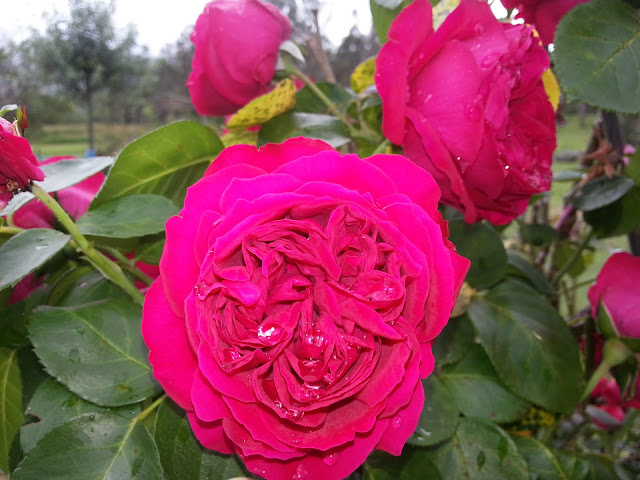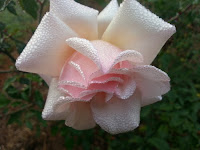In this new series, I will be discussing the ways we can create more beauty in our every-day lives based on the list I gave in the last post. In the first of this series, I want to explore how we can ..
1) 'create more gardens to nurture and enjoy'.
For dedicated gardeners this prospect is a joyful process of planning that involves all sorts of possibilities; like drawing garden plans, compiling lists of seeds and plants, exploring social media, magazines and books for ideas, and gathering materials like compost and mulch.
But the possibility of creating a garden is not just for experienced gardeners. Gardens can be any size, in any location and for anyone who wants to have a go at creating one. Plants and seeds can be very forgiving and it's always fun to see which seeds and plants will grow well for you. A garden can start with one small pot with a few succulents. Or it could be a tray of potted herbs on a sunny windowsill. Even a jar filled with seeds for sprouting and putting into salads is a type of garden and fun to do.

So even if you've never really gardened before, it's never too early or too late to try. My journey with gardening started with growing herbs. I was encouraged by a neighbour who was far more knowledgeable than I was about gardening at the time. Growing herbs actually became addictive, because I was able to learn about their history and how people used herbs in food and for medicine over the centuries. So I began to collect books on herbs as well. And I learnt by trial and error; how to grow them from seed, which herbs liked full sun, and which herbs would grow well in shade. And then I wanted to learn more, so I did a few short courses and finally combined my love of horticulture, its history and therapeutic uses with criminology and environmental psychology for my doctoral research. And it took me to Rome, Venice and London amongst other places! And there's still much more to explore!

While not everyone will want to take gardening to the lengths that I have, there are lots of short courses available. And gardening also involves other areas of possibility to explore. For instance, making a garden is a creative process that uses colour, shape, texture, fragrance much as an artist does. In fact, I read somewhere that garden design is a little like painting in 3D.
But don't be daunted by my story. After all, small children can garden. Simply pushing a seed into a small pot filled with potting mix and watering it, placing it in the sunshine on a balcony is a fun way to start a garden.
Gardeners are generous people and there is sure to be someone in your community who will be delighted to share their expertise. After all, that's what gardening is all about. Community gardens are a great place to start. And a wonderful way of sharing a love of growing beautiful plants, whether they be vegetables and herbs, or native plants and trees, or shrubs and flowers! The possibilities for creating a garden are endless. We need only to look at the natural world around us to know that nature loves to garden and is generous in the beauty she creates!
So while my journey with gardening started off by growing a few herbs in pots and ended in growing heirloom and old-fashioned roses, who knows where your journey of gardening might end .. and what adventures you might have along the way!





















































